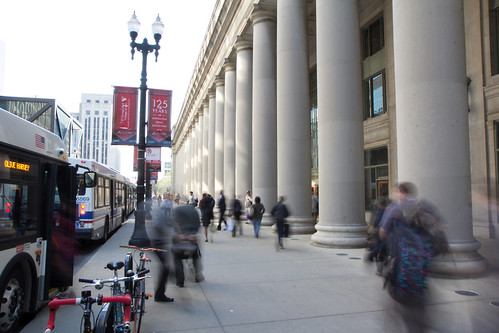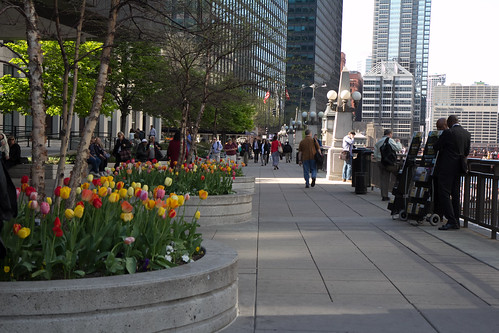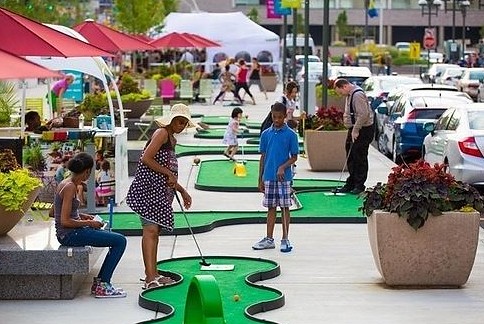Chicago’s Union Station is a key national transportation hub and one of our city’s iconic structures, but in some ways it’s sadly underutilized. The Metropolitan Planning Council, a nonprofit that promotes sustainable transportation and development in the region, wants to change that. Their fifth annual placemaking contest, Activate Union Station, challenges Chicagoans to come up with low-cost ideas for activating three of the station’s grand public spaces: the Great Hall, the east-facing Canal Street arcade, and the riverside plaza of the station’s east building.
The competition, sponsored by Fifth Third Bank, will award $5,000 to two different individuals or teams with the best proposals, to implement their placemaking ideas in two of the three spaces. The competition is open to the general public, but the winners will need to demonstrate the ability to design, build and execute their proposals.
An MPC video about the Activate Union Station contest.
Applications must be submitted at activateunionstation.com by Wednesday, July 24, at 5 p.m. Projects will be implemented over nine days this summer between August 24 and September 2. Winners will be selected by a panel of representatives from the fields of visual and performing arts, architecture, and urban planning, plus Amtrak officials. A public vote on the entries will also be taken into consideration.
The station is a remarkable blank canvas for ideas to encourage human interaction, creativity and play. It draws 120,000 Metra and Amtrak passengers every day, more travelers than Midway Airport, but few of them spend much extra time there because there isn't much to do aside from patronizing a handful of shops, restaurants and bars. But the Great Hall, with its 110-foot ceiling; the arcade, which provides shelter from the elements and is flanked by massive pillars; and the plaza, already a popular place to eat lunch during summer, all have the potential to be vibrant gathering places.
MPC Program Director Marisa Novara told me there’s been some misunderstanding about the contest. “We’ve had a few cranks commenting on our blog, saying, ‘$5,000? What the hell? What are you supposed to do with that.’ They’re saying it’s not enough money. But we’re not talking about a massive construction or public works project here. We’re talking about very low budget, low-barrier projects. Our approach is, ‘lighter, faster, cheaper.’”
Novara said possible placemaking proposals might include a pop-up art gallery or dance hall, classical music concerts or cooking classes. In conjunction with the contest, Fitness Formula Clubs will be holding free classes in Zumba, kickboxing, and Pound, a workout featuring simulated drumming. “The nice thing about these contests is that the people we hear from have much better ideas than we do,” she said.
The Union Station contest is partly inspired by similar projects at train stations in Washington, D.C. and Philadelphia. “A major placemaking principle is that you’re never finished,” Novara said. “It’s important to establish a feedback loop with the public and see what happens.” For example, a wide, block-long sidewalk across from Philly’s Union Station was dubbed The Porch and used as a space for community-building ideas. “The farmers market they attempted there was a disaster, but the beergarden was a hit,” she said. Other activities and attractions at The Porch included exercise classes, hammocks, food trucks and a miniature golf course.
“We’re working closely with Amtrak on this and we’re really encouraged by their enthusiasm for the project,” Novara said. If the placemaking ideas are successful, the railroad is open to the possibility of ongoing programming in the future. “Our hope is we will be able to demonstrate some real energy and interest, and Amtrak will be interested in following up on that.”







